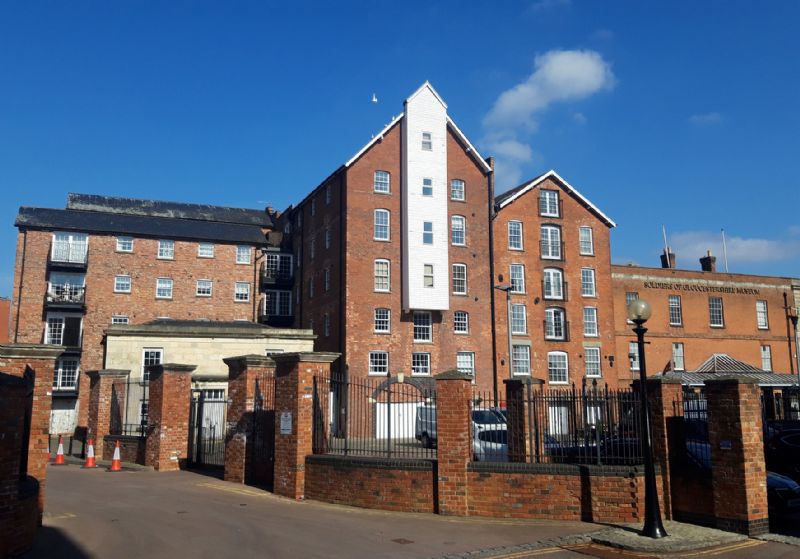- Home
- News, Articles & Reviews
We are hiring! Please click here to join our growing magazine delivery team in Gloucestershire!
Areas
Local Information
Archive

Priday’s Mill
All Areas > Local Information > Did you Know?
Author: Paul James, Posted: Wednesday, 23rd April 2025, 09:00
Many readers will know Priday’s Mill as an apartment building on the Commercial Road side of Gloucester Docks. It was the first Docks building to be converted to residential in the early 2000s, paving the way for other warehouses to follow suit.
Older readers will remember the building as the Priday Metford flour mill with its iconic concrete silo, which was demolished when the site was redeveloped. Priday Metford closed in March 1994 with the loss of 60 jobs after the company was taken over by Spillers, a subsidiary of Dalgety.
The building, originally known as the City Flour Mill, was built in 1850, so this year marks its 175th anniversary. It is notable for the 1854 Hadley v Baxendale landmark legal case, which established the ‘foreseeability’ test for consequential damages for breach of contract, which is used internationally, particularly in the US.
The steam engine shaft ended up on a canal boat instead of a train
The case centred on a broken steam engine shaft at the mill. The shaft could only be repaired in Greenwich, some 125 miles away. The owners of the City Flour Mill, Joseph and Jonah Hadley, hired a moving company, Pickfords, which was operated by Baxendale. For an unexplained reason, the shaft went astray and ended up on a canal boat instead of a train and took several days to reach Greenwich, during which time the mill sat idle.
They sued Pickfords for the money they lost while it closed. The Court ruled that Pickfords could not be held liable for that level of damages as they did not necessarily know that the mill could not function without it. This is the essence of the ‘foreseeability’ test for contract breaches – you cannot be held liable for losses you could not have reasonably anticipated.
In the early 2000s, a group of US lawyers came over to a special conference held at the University of Gloucestershire based on this particular case. In Gloucester itself, the legal significance of this building isn’t widely known.Copyright © 2025 The Local Answer Limited.
Unauthorized use and/or duplication of this material without express and written permission from this site's author and/or owner is strictly prohibited. Excerpts and links may be used, provided that full and clear credit is given to The Local Answer Limited and thelocalanswer.co.uk with appropriate and specific direction to the original content.More articles you may be interested in...


© 2025 The Local Answer Limited - Registered in England and Wales - Company No. 06929408
Unit H, Churchill Industrial Estate, Churchill Road, Leckhampton, Cheltenham, GL53 7EG - VAT Registration No. 975613000You are leaving the TLA website...
You are now leaving the TLA website and are going to a website that is not operated by us. The Local Answer are not responsible for the content or availability of linked sites, and cannot accept liability if the linked site has been compromised and contains unsuitable images or other content. If you wish to proceed, please click the "Continue" button below:




